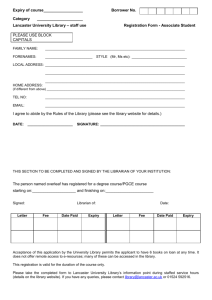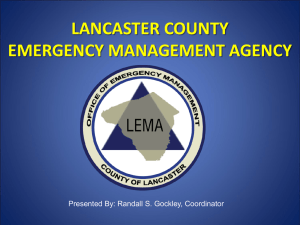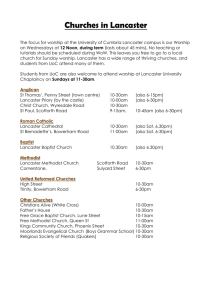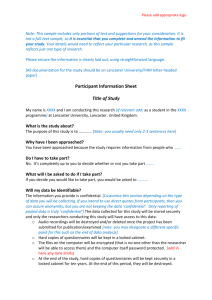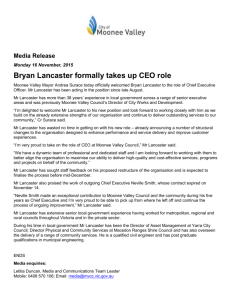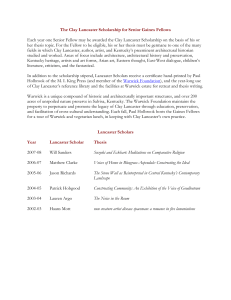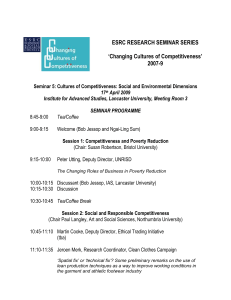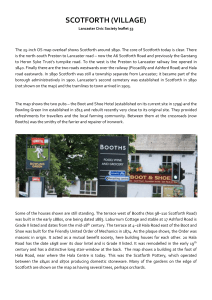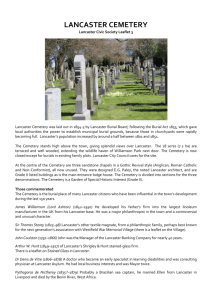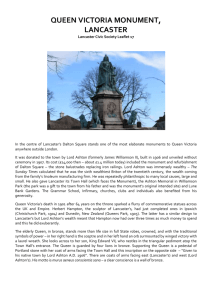sun street, lancaster - Lancaster Civic Society
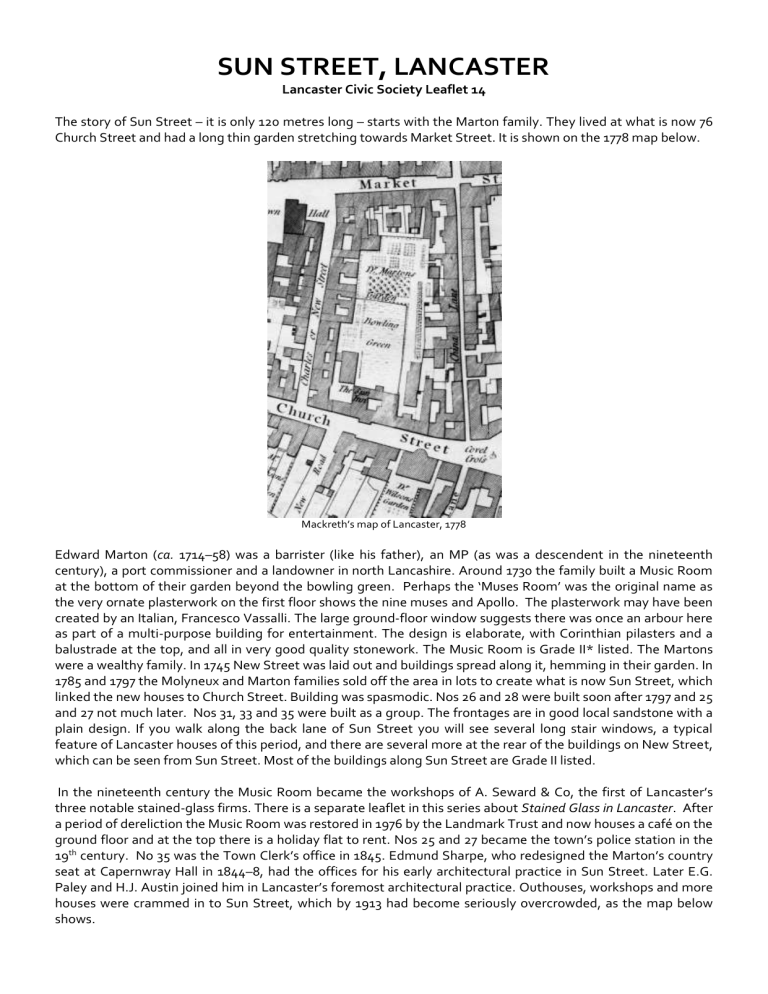
SUN STREET, LANCASTER
Lancaster Civic Society Leaflet 14
The story of Sun Street – it is only 120 metres long – starts with the Marton family. They lived at what is now 76
Church Street and had a long thin garden stretching towards Market Street. It is shown on the 1778 map below.
Mackreth’s map of Lancaster, 1778
Edward Marton (ca. 1714–58) was a barrister (like his father), an MP (as was a descendent in the nineteenth century), a port commissioner and a landowner in north Lancashire. Around 1730 the family built a Music Room at the bottom of their garden beyond the bowling green. Perhaps the ‘Muses Room’ was the original name as the very ornate plasterwork on the first floor shows the nine muses and Apollo. The plasterwork may have been created by an Italian, Francesco Vassalli. The large ground-floor window suggests there was once an arbour here as part of a multi-purpose building for entertainment. The design is elaborate, with Corinthian pilasters and a balustrade at the top, and all in very good quality stonework. The Music Room is Grade II* listed. The Martons were a wealthy family. In 1745 New Street was laid out and buildings spread along it, hemming in their garden. In
1785 and 1797 the Molyneux and Marton families sold off the area in lots to create what is now Sun Street, which linked the new houses to Church Street. Building was spasmodic. Nos 26 and 28 were built soon after 1797 and 25 and 27 not much later. Nos 31, 33 and 35 were built as a group. The frontages are in good local sandstone with a plain design. If you walk along the back lane of Sun Street you will see several long stair windows, a typical feature of Lancaster houses of this period, and there are several more at the rear of the buildings on New Street, which can be seen from Sun Street. Most of the buildings along Sun Street are Grade II listed.
In the nineteenth century the Music Room became the workshops of A. Seward & Co, the first of Lancaster’s three notable stained-glass firms. There is a separate leaflet in this series about Stained Glass in Lancaster. After a period of dereliction the Music Room was restored in 1976 by the Landmark Trust and now houses a café on the ground floor and at the top there is a holiday flat to rent. Nos 25 and 27 became the town’s police station in the
19 th century. No 35 was the Town Clerk’s office in 1845. Edmund Sharpe, who redesigned the Marton’s country seat at Capernwray Hall in 1844–8, had the offices for his early architectural practice in Sun Street. Later E.G.
Paley and H.J. Austin joined him in Lancaster’s foremost architectural practice. Outhouses, workshops and more houses were crammed in to Sun Street, which by 1913 had become seriously overcrowded, as the map below shows.
Since then Sun Street has seen some demolition and opening out of the area. The Music Room now has an open square in front of it so you can admire the frontage. Recent arrivals in Sun Street are several cafés and eateries.
The new gates of the Sun Street Café are of a distinctive solar design.
Ordnance Survey map of Sun Street, 1913.
At the junction between Sun Street and Church Street is the Sun Hotel and Bar, one of Lancaster’s oldest pubs, long called the Sun Inn. It was built on the site of the mediaeval Stoop Hall. Mackreth’s map of 1778 shows how the left-hand side of the inn was demolished to make way for the new Sun Street, probably in the late 1790s.
Throughout its life the Sun Inn has been a place to do business and where organisations such as the Musical
Society, Freemasons and Lancaster Agricultural Society hired rooms.
If you cross Church Street you will see 76 Church Street, the Lancaster home of the Martons. The rear of the building is 17 th century and the frontage redone in a style more fashionable for the later 18 th century. The wrought-iron railings are listed (Grade II*) like the rest of the building. Note the rare ‘link extinguisher’ by the front door that put out links or torches that were used when travelling on unlit streets at night. The Martons left for their country house north of Lancaster, and later No 76 became the local Conservative Club. It is now offices.
The interior is in a very fine Georgian style but there is generally no public access.
The Music Room, Sun Street – detail of frontage
Sandstone in Sun Street Modern gates in Sun Street
Text and Photographs – Gordon Clark. Published by Lancaster Civic Society (© 2014). www.lancastercivicsociety.org www.citycoastcountryside.co.uk
